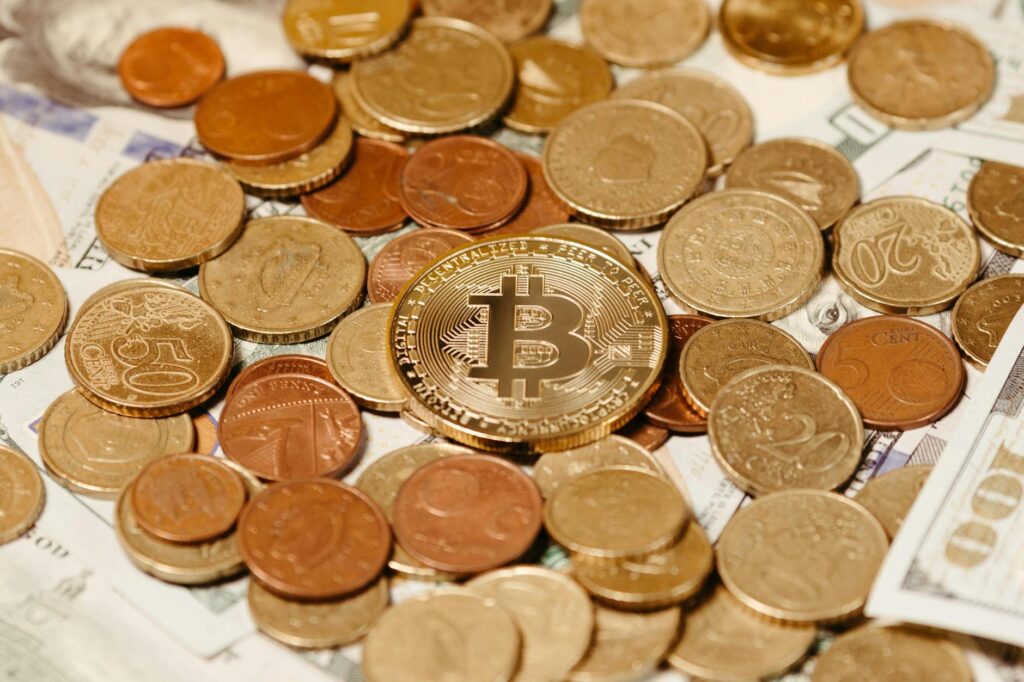The Digital Dollar You Can Hold in Your Pocket: How Stablecoins Are Quietly Changing Everything
Imagine your life savings, the money you’ve worked years to build, losing half its value in a single month. Not because of a bad investment, but because the currency of your country is in a freefall. This isn’t a hypothetical scenario; it’s a harsh reality for millions in places like Argentina, Turkey, and Nigeria. Now, imagine a different world. A world where you can hold a digital version of the U.S. dollar on your phone, completely bypassing a failing local banking system. This is the powerful promise of stablecoins in emerging markets, and it’s far more than just another crypto trend. It’s a financial revolution happening right now, pixel by pixel, transaction by transaction.
We’re not talking about the wild volatility of Bitcoin. Forget the moonshots and the memes. We’re talking about stability. Predictability. A tool that provides a solid foundation in economically shaky environments. Stablecoins are essentially cryptocurrencies pegged to a stable asset, most commonly the U.S. dollar. For every digital coin in circulation, there’s (supposedly) a real dollar sitting in a bank account somewhere, ensuring its value remains, well, stable. This simple concept is a monumental leap for those who have been shut out, underserved, or betrayed by traditional financial systems.
Key Takeaways
- Inflation Shield: Stablecoins offer a way for people in countries with volatile currencies to save in a stable asset like the U.S. dollar, protecting their wealth from hyperinflation.
- Remittance Revolution: They drastically cut the cost and time of sending money across borders, disrupting a multi-billion dollar industry that preys on migrant workers.
- Global Access for Local Business: Entrepreneurs can easily accept international payments without needing a traditional bank account, opening up global markets.
- DeFi Gateway: Stablecoins act as the on-ramp to a world of decentralized finance (DeFi), allowing access to lending, borrowing, and earning yield for the unbanked.
- Challenges Remain: Significant hurdles like regulatory uncertainty, the digital literacy gap, and infrastructure limitations need to be addressed for widespread adoption.
So, What’s the Big Deal with Emerging Markets Anyway?
It’s easy to take financial stability for granted when you live in a country with a strong currency and a robust banking system. You trust that the money in your account today will be worth roughly the same tomorrow. You can send money to a friend with a few taps. You can apply for a loan. But for a huge portion of the world’s population, this is pure fantasy.
Let’s paint a picture. Globally, about 1.4 billion adults are unbanked. They have no access to basic financial services. No savings account. No credit. They operate entirely in cash, which is inefficient and insecure. This financial exclusion traps them in cycles of poverty. Even for those who are banked in emerging economies, the system is often stacked against them. Their local currencies can be incredibly volatile, subject to political instability and poor monetary policy. In 2023, Argentina’s inflation rate soared past 200%. Think about that. Your money was worth a third of what it was a year prior. How can you plan for the future? How can you run a business?
Then there’s the issue of remittances. Millions of people work abroad and send money home to support their families. To do this, they rely on services like Western Union or MoneyGram, which can charge exorbitant fees—sometimes as high as 10-15% of the transaction amount. That’s money being skimmed off the top that should be going to families who desperately need it. It’s slow, it’s expensive, and it’s a system ripe for disruption.
Enter Stablecoins: A Digital Lifeline
This is where the story gets interesting. Stablecoins, like USDC (USD Coin) or USDT (Tether), step into this void not as a speculative asset, but as a practical tool. A utility. They are, for all intents and purposes, digital dollars. They live on a blockchain, which means they can be sent anywhere in the world, to anyone with an internet connection and a smartphone, nearly instantly and for a fraction of a cent. There’s no bank in the middle. No three-to-five business days. No outrageous fees.
This isn’t just a marginal improvement. It’s a paradigm shift. For someone living under a hyperinflationary regime, the ability to convert their local, rapidly devaluing currency into a stable, dollar-pegged asset is nothing short of a superpower. It’s a way to preserve the value of their hard work.
Fighting Hyperinflation: A Store of Value
The most immediate and powerful use case for stablecoins in emerging markets is as a hedge against inflation. In countries like Venezuela and Argentina, citizens have been flocking to stablecoins for years. They see it as a more accessible version of holding physical U.S. dollars, which can be difficult and dangerous to acquire and store. With a few clicks on a crypto exchange or a peer-to-peer platform, they can swap their pesos or bolivars for USDC. Suddenly, their savings are shielded from the local economic chaos. They can sleep a little better at night knowing their nest egg isn’t evaporating.
Remittances Reimagined: Fast, Cheap, and Borderless
Let’s go back to that migrant worker sending money home. Instead of going to a physical agent, filling out forms, and paying a hefty fee, they can now buy stablecoins on an exchange and send them directly to their family member’s digital wallet. The process takes minutes, not days. The cost? Maybe a dollar or two in network fees, regardless of whether they’re sending $50 or $5,000. That 10% saving is a huge deal. It’s an extra week of groceries, a school uniform, or medicine. This isn’t just theory; it’s happening at scale in corridors between the U.S. and Latin America, and across Africa and Southeast Asia.

Unlocking Global Commerce for Local Entrepreneurs
Consider a talented artisan in the Philippines who wants to sell their crafts online to customers in Europe. Traditionally, this has been a nightmare. Setting up a merchant account that accepts international credit cards is often impossible without a formal business registration and a traditional bank, which many don’t have. PayPal might not operate in their country or might have high fees and holding periods. With stablecoins, this problem vanishes. The artisan can simply display a QR code for their digital wallet. A customer in Paris can scan it, send payment in USDC, and the artisan receives the funds almost instantly. It levels the playing field, connecting local creators directly to the global economy.
A Gateway to Decentralized Finance (DeFi)
This might be the most futuristic, but also the most profound, application. Stablecoins are the base currency of the decentralized finance (DeFi) ecosystem. Once a person has stablecoins in a wallet, they have an entry ticket to a global, open, and permissionless financial system. They can deposit their stablecoins into lending protocols like Aave or Compound and start earning interest—often at rates much higher than their local bank could ever offer. They can use them as collateral to take out a loan without needing a credit score. For the 1.4 billion unbanked, this is revolutionary. It’s the first time they’ve ever had the chance to access services that build wealth, not just facilitate payments.
The Not-So-Simple Reality: Hurdles and Headwinds
Of course, the path to mass adoption isn’t paved with digital gold. It’s a bumpy road with some serious obstacles. While the potential is immense, we have to be realistic about the challenges that lie ahead. This technology isn’t a magic wand that instantly solves decades of economic and social problems.
The Regulatory Maze
Governments are, to put it mildly, nervous. They don’t like the idea of capital flowing freely across borders outside of their control. Many central banks see stablecoins as a threat to their monetary sovereignty. As a result, the regulatory landscape is a confusing patchwork. Some countries have embraced crypto, others have banned it, and most are stuck somewhere in between. This uncertainty makes it risky for businesses to build on this technology and for individuals to use it openly. A sudden regulatory crackdown could wipe out access overnight.
The Education Gap
Crypto is complex. Phrases like “non-custodial wallet,” “private keys,” and “gas fees” are intimidating for newcomers. There’s a steep learning curve. The concept of being your own bank is empowering, but it also comes with immense responsibility. If you lose your private keys, your money is gone forever. There’s no customer service line to call. Scams and phishing attacks are rampant in the crypto space, preying on inexperienced users. Bridging this educational gap through accessible, localized content and user-friendly applications is absolutely critical for safe and sustainable adoption.

Infrastructure and Accessibility
To use stablecoins, you need two things: a reasonably modern smartphone and a reliable internet connection. While smartphone penetration is growing rapidly in emerging markets, it’s far from universal. And consistent, affordable internet access remains a major challenge in many rural areas. Furthermore, the final step—converting stablecoins back into local currency to pay for everyday goods—can still be a hurdle. While peer-to-peer networks are robust, the on-ramps and off-ramps to the traditional financial world need to be more seamless and widespread.
The Trust Factor: Not All Stablecoins Are Created Equal
The word “stablecoin” itself can be misleading. The industry was rocked by the collapse of the algorithmic stablecoin Terra/UST in 2022, which wiped out billions of dollars and proved that not all pegs are created equal. Users need to understand the difference between fully-backed stablecoins (like USDC), which are backed 1-to-1 by real assets, and more experimental, riskier models. Building trust requires transparency, regular audits, and a proven track record, something the crypto industry is still working on.
“The average cost of sending a $200 remittance to Sub-Saharan Africa is still over 7.4%. Blockchain-based solutions can reduce that to under 1%. For millions of families, that difference is life-changing.”
Case Studies: Where Are Stablecoins Making a Real Impact?
This isn’t just theoretical. Let’s look at where the rubber is meeting the road.
- Argentina: With triple-digit inflation, Argentinians have become some of the most sophisticated stablecoin users in the world. They use them for everything: saving, paying freelancers, and even buying large-ticket items like cars and real estate peer-to-peer to avoid the rapidly devaluing peso.
- Nigeria: Despite a complex regulatory environment, Nigeria has one of the highest rates of crypto adoption globally. Young, tech-savvy Nigerians use stablecoins to run import/export businesses, receive payments from international clients, and hedge against the Naira’s volatility.
- Ukraine: During the initial chaos of the Russian invasion, the traditional banking system faltered. The Ukrainian government and NGOs turned to crypto, including stablecoins, to quickly receive millions in international aid and distribute it to citizens in need, showcasing its power in a crisis.
- The Philippines: A huge remittance market, the Philippines has seen the rise of play-to-earn games like Axie Infinity, where players earn crypto rewards. Many players immediately convert these earnings into stablecoins to lock in their value before cashing out to pesos to support their families.
Conclusion: More Than Just Crypto
When you strip away the hype and the technical jargon, the role of stablecoins in emerging markets becomes incredibly clear. It’s not about speculation or getting rich quick. It’s about creating access. It’s about giving individuals and small businesses the tools to participate in the global economy on their own terms. It’s about providing a simple, powerful way to protect wealth in the face of economic instability.
The road ahead is long, and the challenges are real. But the momentum is undeniable. For millions of people who have been left behind by the legacy financial system, stablecoins aren’t just an alternative; they’re a necessity. They represent a fundamental shift in who controls the flow of money, moving power away from centralized institutions and into the hands—and phones—of the people. And that’s a story worth watching.


